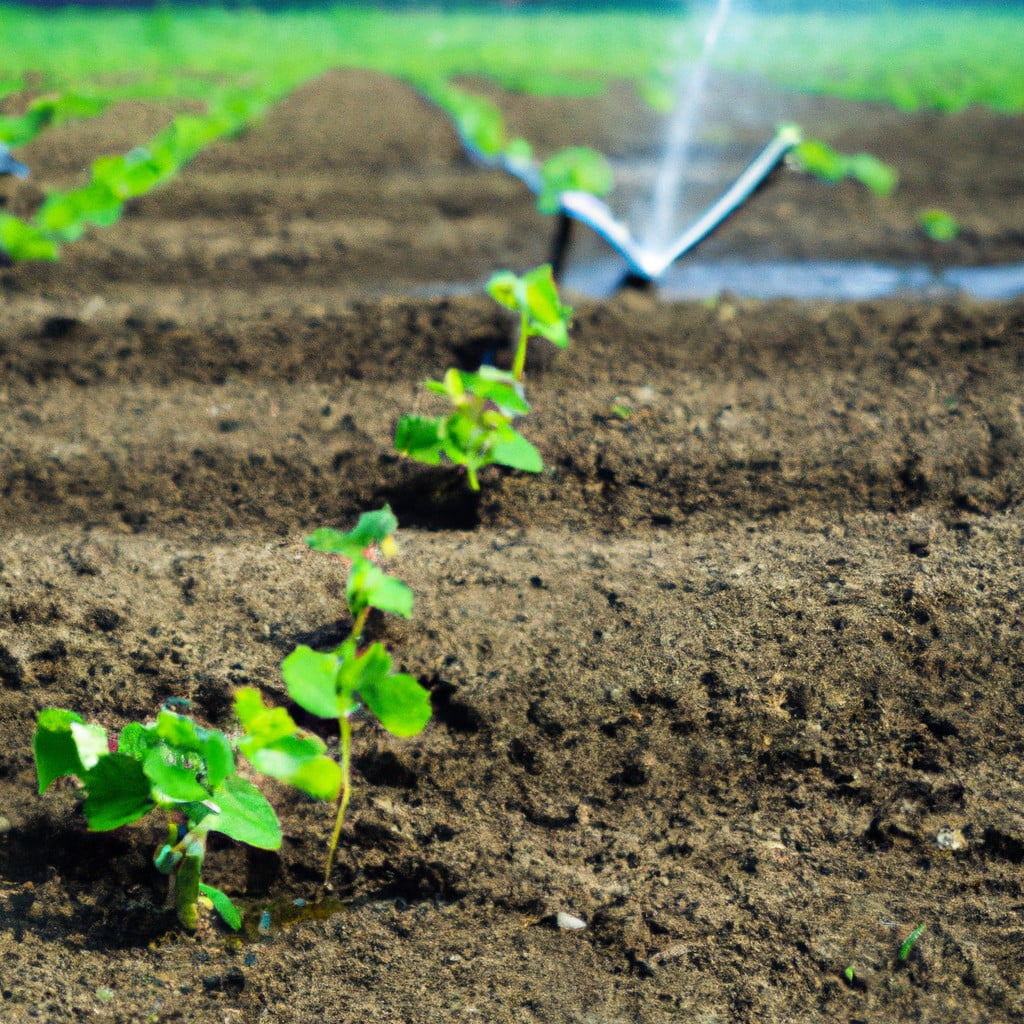Yes, regenerative farming can be profitable as it can reduce input costs over time, enhance crop resiliency and potentially improve yields.
Regenerative farming, when implemented correctly, can indeed be profitable. This agricultural method offers a multitude of benefits that can lead to increased yields, enhanced soil health, and reduced input costs over time.
However, profitability is not instant and requires a strategic approach and a thorough understanding of the regenerative practices. This article will delve into the specifics of how regenerative farming can become a profitable venture, considering factors such as cost-saving, market demand for sustainably grown products, and government incentives.
So, if you’re interested in the economic aspects of regenerative farming, you’re in the right place. Stay tuned for the comprehensive details.
Key takeaways:
- Regenerative farming can reduce input costs and improve crop resilience.
- Diversified crop rotations, cover cropping, and managed grazing are key practices.
- Regenerative farming can lead to higher profits per acre compared to conventional methods.
- Challenges include transitioning time, lack of equipment, and market inconsistencies.
- The future of regenerative farming holds promise with increasing demand and incentives.
Look Inside:
Understanding Regenerative Farming

Regenerative farming focuses on the rehabilitation and enhancement of the entire ecosystem of the farm. Unlike traditional methods, this approach works in harmony with nature, emphasizing the enrichment of soils, conservation of water, and fostering biodiversity.
By rebuilding organic matter within the soil and restoring degraded soil biodiversity, this approach produces nutrient-rich crops, sequesters carbon, and improves the water cycle. It’s a radical shift from conventional farming models, which often degrade soil health.
Soil rejuvenation and increased organic content are key goals in regenerative agriculture, leading to more robust, resilient crops and, ultimately, better farm profitability.
What Is Regenerative Agriculture?
Regenerative agriculture seeks to revitalize the health and functionality of soil ecosystems, primarily through practices rooted in understanding and managing soil biology. These practices include diverse crop rotations, no-till farming, cover cropping, and managed livestock grazing.
The end goal is a more resilient system, capable of weathering environmental stresses while minimizing external inputs. Furthermore, healthy soil gained from practicing regenerative agriculture can also act as a significant carbon sink, playing a crucial role in climate change mitigation.
Regenerative Farming Practices
A key aspect of sustainable profitability in agriculture is the strategic implementation of regenerative practices. These include but are not limited to, diversified crop rotations, cover cropping, and managed grazing.
Diversified crop rotations inherently enhance soil fertility and disrupt the lifecycle of pests, reducing the need for synthetic inputs. Similarly, cover cropping acts as a natural soil improver by adding organic matter and enabling microorganism activity leading to better nutrient and water retention.
Meanwhile, managed grazing involves moving livestock across various sections of pastureland. This method mimics the natural behavior of wild grazing animals and aids in enriching the flora and enhancing soil health.
Ultimately, these practices contribute to a more resilient system which can better withstand weather fluctuations and pest infestations. The result is improved crop yields and a reduction in costly inputs, paving the way for greater profitability.
The Economics of Regenerative Agriculture
Regenerative farming, though demanding significant upfront investment, pays off in the long run. Initial costs typically include training, utilizing novel practices such as cover cropping, and acquiring perennial plants for agroforestry. However, these are offset with time through improved soil health and resilience leading to superior crop yields and reduced input costs.
With healthier soils, dependence on expensive fertilizers and pesticides decreases, driving cost-savings.
Additionally, these practices often lead to better quality produce, which attracts a premium in the market, thereby enhancing income. Furthermore, carbon sequestration associated with regenerative practices posses an opportunity for extra income from carbon credits.
Hence, while the switch to regenerative agriculture may involve upfront costs and commitments, the long-term economic outlook is promising and trending upwards.
Case Studies: Profitability of Regenerative Farming
A study conducted by the Natural Resources Conservation Service compared conventional farming methods to regenerative practices employed by Gabe Brown, a North Dakota farmer. These practices included no-till, cover cropping, and diversified crop rotations, yielding higher profits per acre due to reduced input costs, despite having the same yield as conventional farms.
In Australia, a regenerative farming project involving 20 farms recorded a substantial increase in profits over five years by adopting holistic grazing and ecological practices. Adopting these sustainable methods reduced energy costs, lowered labor expenses, and increased farm profitability by improving soil health and productivity.
Furthermore, a 2021 study published by the University of California showcases a Southern Californian agribusiness, Kheyti, which confirmed the economic sustainability of regenerative farming. Their farmers gained an increase in income of 20-30% compared to traditional practices.
These examples affirm the profitability potential in regenerative farming, but they also highlight the necessity of strategic implementation, longer-term investment, and promotion of a healthy micro-ecosystem within farmlands. It proves that investing in regenerative practices can ultimately yield positive financial returns.
Challenges in Implementing Regenerative Farming
Transitioning from conventional farming practices to regenerative ones requires a time investment, typically several growing seasons, for systems to fully incorporate and show results. This delay might pose a challenge for farmers depending on immediate returns. Also, regenerative farming involves a learning curve, educating oneself about specific methods like cover cropping, crop rotation, no-till farming, and others. Lack of technical training and guidance can be obstacles in large-scale adoption.
The scarcity of equipment designed specifically for regenerative practices is another hurdle. Most currently available farming equipment is tailored to conventional farming methods, so adapting these for regenerative practices might involve additional costs.
Lastly, market inconsistencies can hinder profitability. While some consumers are willing to pay for sustainably grown products, this trend is yet to become mainstream. As such, farmers can face challenges in fetching premium prices for regeneratively grown produce, impacting their overall profitability.
The Environmental Impact and Profit Balance
Profitability is not the sole determinant of the success of regenerative farming. Equally critical is the method’s environmental impact, which can, over time, influence economic outcomes.
Regenerative farming contributes to curbing climate change by sequestering carbon in the soil, reducing greenhouse gas emissions. Healthy soils also increase water retention capacity, reducing irrigation costs and enhancing drought resistance.
Improved soil health leads to more nutritious crops, thereby raising their market value. On the other hand, transitioning may initially reduce yields, impacting short-term profits. However, in the long term, with enhanced soil fertility and efficiency of resources, farmers can benefit from consistent, increased yields and income diversification.
Hence, a balance between environmental sustainability and profitability is crucial for the success of regenerative farming.
Government Policies and Profitability of Regenerative Farming
Effective government policies can pave the way for smoother adoption and increased profitability of regenerative farming. Subsidies for sustainable practices, for example, could lower the initial transition cost from traditional to regenerative agriculture. Similarly, tax breaks or grants specifically geared towards sustainable farmers could aid in covering subsequent costs.
Policy support also extends to research and development, continuing education, and facilitating connections between farmers and markets. It is worth noting that farmers in certain regions may have access to more governmental resources. Thus, regional variability in policy support can impact the profitability of regenerative farming.
Taking advantage of available governmental resources and understanding the implications of various policy frameworks is critical for farmers seeking to maximize the profitability of their regenerative farming operations.
Future Prospects of Regenerative Farming
The transition from conventional farming to regenerative practices exhibits significant promise for the future. As demand for sustainably produced food grows, so will the financial incentives and market opportunities.
Enhanced soil fertility could lead to increased yields and greater crop resilience, providing a buffer against fluctuating weather conditions linked to climate change. Additionally, developments in technology and innovative farming techniques are poised to assist farmers in transitioning effectively, improving long-term profitability.
However, for a smooth transition, it’s essential to provide ongoing education, robust infrastructure, and support systems for regenerative farmers. Achieving this entails the cooperation of stakeholders across the agricultural sector, from government bodies to private enterprises and consumers.
Benefits of Regenerative Agricultural Practices
Regenerative agricultural practices can significantly enhance soil fertility and biodiversity. These practices are a strategic blend of traditional and modern farming techniques aimed at promoting a healthier ecosystem.
Enhanced soil fertility via these practices leads to an increase in crop yields. By nourishing the soil with organic matter, the need for synthetic fertilizers is reduced, thereby decreasing farming expenses.
Additionally, embracing regenerative methods can boost farm resilience in the face of changing climate conditions. As soil health improves, the land’s water retention capacity increases, making crops less vulnerable to periods of drought.
Conversely, during heavy rainfall, healthier soils demonstrate better drainage reducing risks of flooding and ensuing crop losses. This climate resilience can secure more consistent farm yields, providing better financial stability for farmers.
The market demand for sustainably produced agricultural products is also on the rise. Consumers are increasingly aware of the environmental impact of their food choices, and willing to pay a premium for products that contribute to healthier ecosystems. This growing demand can translate into increased farm revenues.
Lastly, engaging in regenerative farming can open doors to certain government incentives and grants aimed at promoting environment-friendly farming practices, thus adding another layer of potential profitability.
Get Funding for Regenerative Agricultural Practices
Several financial assistance programs are available to farmers interested in transitioning to regenerative practices. For instance, the U.S. Department of Agriculture’s Natural Resources Conservation Service provides various programs, such as the Environmental Quality Incentives Program.
Another feasible option for many is private investments. A growing number of investors are interested in supporting sustainable agriculture ventures. Impact investing funds, for example, often look for opportunities to finance projects that align with the United Nations Sustainable Development Goals, including responsible consumption and production.
Additionally, non-profit organizations, such as the National Young Farmers Coalition, offer grants specifically tailored towards aiding farmers in adopting sustainable agricultural practices. While it requires research and paperwork to access these funds, they can significantly support your transition to regenerative farming, reducing financial risks.
However, while such avenues can provide needed capital, it is critical to have a comprehensive business plan focused on sustainability to attract such funds. Understanding your farm’s unique challenges, opportunities, and the specific area where funds can be utilized most effectively is equally important.
FAQ
What is the downside to regenerative farming?
The major disadvantage of regenerative farming is that it requires farmers to obtain new knowledge and skills, possibly experiencing an increase in unwelcome plants due to less tilling and potentially leading to escalated herbicide use.
What is the most profitable type of farm?
The most profitable type of farm is a dairy farm due to the high demand for various organic dairy products throughout the year.
How much does a regenerative farm cost?
The cost of implementing regenerative agricultural practices is approximately US $355.05 per hectare.
How do I start a regenerative farm?
Starting a regenerative farm involves incorporating practices like cover cropping, minimizing tillage, rotating crops, spreading compost or super-compost "inoculants," and transitioning away from synthetic inputs and factory farming.
How does the soil health impact the profitability of regenerative farming?
Soil health directly influences the profitability of regenerative farming as healthier soil enhances crop yield and quality, reduces input costs, and improves resilience against climate variability.
Can small-scale farmers also gain profit from regenerative agriculture?
Yes, small-scale farmers can potentially gain profit from regenerative agriculture through increased yield, improved soil health, decreased input costs, and possible premiums for sustainably produced crops.
What are the market opportunities for products produced through regenerative farming?
The market opportunities for products produced through regenerative farming include the increasing consumer demand for sustainably-produced foods, potential for higher premium prices, and the emerging market for carbon credits.




